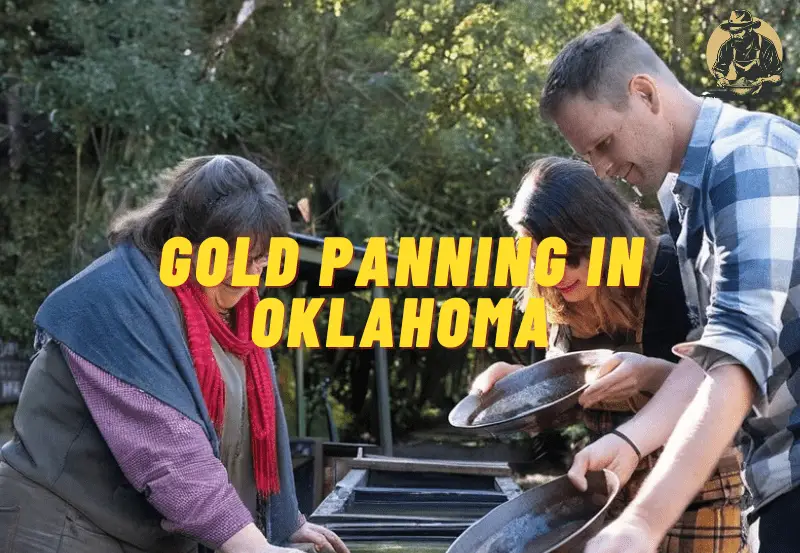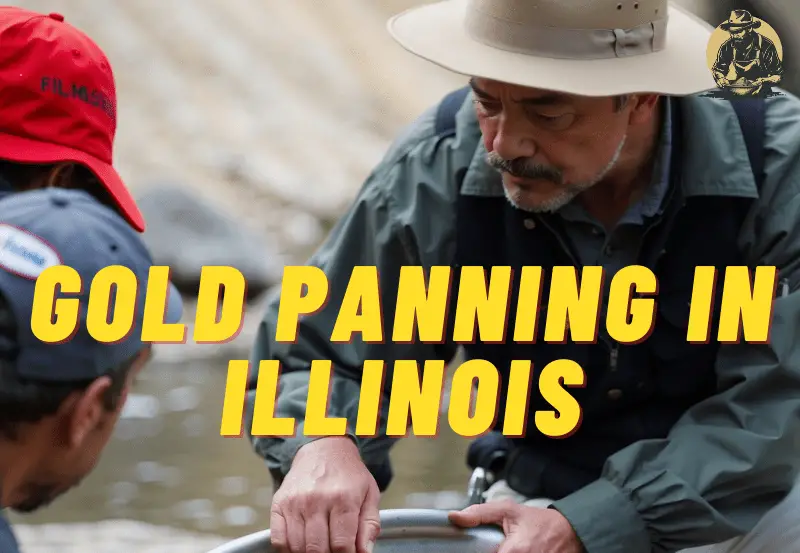Are you ready to embark on an exciting treasure-hunting adventure right here in Indiana? Look no further than our comprehensive guide, “Panning for Gold in Indiana: Your Essential Guide to Finding Hoosier Treasures.” With this handy resource, you’ll uncover the secrets of locating valuable treasures scattered throughout the Hoosier State. From hidden gems to historical artifacts, we’ve got you covered with tips, techniques, and insider knowledge to help you strike gold. So grab your pan and get ready to delve into the fascinating world of treasure hunting in Indiana!
Geology of Indiana
Indiana is known for its diverse geological history, which has played a significant role in the formation of gold deposits in the state. These deposits were primarily formed during the Paleozoic Era, over millions of years, through a variety of geological processes such as erosion, deposition, and metamorphism. The gold in Indiana is typically found in quartz veins, which are formed when hydrothermal fluids carrying gold and other minerals flow through fractures in the rocks.
Formation of Gold Deposits in Indiana
The formation of gold deposits in Indiana can be attributed to several key geological events. It all began during the Proterozoic Era when the region experienced intense tectonic activity and the formation of mountain ranges. As these mountains were eroded over time, gold and other heavy minerals were released and transported downstream by rivers and streams. Eventually, these minerals settled in sedimentary basins and were subjected to heat and pressure, resulting in the formation of gold deposits.
Types of Rocks to Look for in Gold Panning
When it comes to gold panning in Indiana, certain types of rocks are more favorable for finding gold. Quartz is one such rock that often contains visible gold flakes or veins. The presence of quartz indicates that hydrothermal fluids may have deposited gold in the area. Another rock to keep an eye out for is shale, as it can contain small concentrations of gold. Additionally, granite and gneiss, which are common in certain regions of Indiana, have the potential to host gold deposits.
Indicators of Gold in Indiana
While there are no foolproof indicators of gold in Indiana, there are several signs that can increase your chances of finding this precious metal. One key indicator is the presence of black sand, which is composed of heavy minerals such as magnetite and hematite. These minerals often accompany gold and can be found in concentrated amounts in certain areas. Additionally, the presence of pyrite, also known as fool’s gold, may indicate the possibility of actual gold nearby. However, it is important to note that these indicators are not definitive proof of gold and further exploration is necessary.
Basic Gold Panning Equipment
To get started with gold panning in Indiana, you will need a few basic tools. The most essential equipment is a gold pan, which is used to separate the heavier gold particles from the surrounding sediment. A classifier screen is also helpful in removing larger rocks and debris from the material being panned. A small shovel or trowel is necessary for digging and moving sediment, while a snuffer bottle or tweezers can be used to collect and transport small gold flakes.
Advanced Tools for Serious Prospectors
For those who are more serious about gold panning, there are several advanced tools that can greatly improve your chances of finding gold. A sluice box is a long, narrow trough that is used to wash large amounts of sediment in a controlled manner. This allows for a higher concentration of gold to be recovered. A gold dredge is another powerful tool that can be used to extract gold from riverbeds and streams. Metal detectors are also popular among serious prospectors, as they can help locate gold that is hidden beneath the surface.
Safety Gear for Gold Panning
While gold panning is an enjoyable and rewarding activity, it is important to prioritize safety. Before heading out, make sure to pack essential safety gear such as a life jacket if you plan to pan near water bodies. Additionally, wearing sturdy boots with ankle support can help protect your feet from sharp rocks or debris. It’s also a good idea to bring sunscreen, a hat, and insect repellent to protect yourself from the elements during extended periods of outdoor activity.
Researching Potential Gold Panning Locations
Before venturing out to search for gold in Indiana, it is crucial to research potential gold panning locations. There are numerous online resources, guidebooks, and geological maps available that can provide valuable information about known gold-bearing areas. It’s important to consider factors such as accessibility, land ownership, and historical gold production when selecting a location for your gold panning adventure.
Public vs. Private Land
When it comes to gold panning in Indiana, it’s essential to understand the difference between public and private land. Public land, such as state or national forests, often allows recreational gold panning. However, it is important to familiarize yourself with any regulations or permits required before starting your search. Private land, on the other hand, requires permission from the landowner before engaging in any gold panning activities.
Popular Areas for Panning for Gold in Indiana
Indiana offers several popular gold panning areas that have been known to yield impressive results. The Eastern and Southern regions of the state, particularly along the Ohio River and its tributaries, have historically been productive for gold prospecting. Brown County and Monroe County are also worth exploring, as they have seen significant gold production in the past. Remember to research and obtain any necessary permits before visiting these areas.
Obtaining the Required Permits Panning for Gold in Indiana
Before heading out for your gold panning adventure, it is important to obtain any required permits. Indiana has specific regulations regarding recreational gold panning, particularly on public land. This may include obtaining a permit from the appropriate state agency or paying a small fee. Make sure to familiarize yourself with the specific requirements for the area you plan to visit and ensure that you are in compliance with all applicable laws.
Packaging the Necessary Supplies
Properly packaging the necessary supplies for your gold panning adventure is important to ensure a smooth and enjoyable experience. Start by selecting a durable and waterproof backpack or bag to transport your equipment. Make sure to pack your gold pan, classifier screens, shovel or trowel, and any additional tools or safety gear you may need. It’s also a good idea to bring some water and snacks to stay hydrated and energized during your gold panning activities.
Planning for Safety and Comfort
When planning for your gold panning adventure, it’s important to prioritize safety and comfort. Dress appropriately for the weather and wear layers that can be added or removed as needed. If you plan to pan near water, make sure to bring a life jacket and inform someone of your location and expected return time. Consider bringing a camping chair or blanket to sit on, as well as sunscreen, a hat, and insect repellent to protect yourself from the elements.
Setting Up Your Gold Panning Operation
Before you begin panning for gold, it’s important to set up your operation properly. Find a suitable location near a water source, such as a river or stream, where gold is most likely to have settled. Clear away any rocks or debris from the area and create a small settling pond or pool by diverting water with rocks or sandbags. This will allow sediment to settle, making it easier to extract the gold particles during the panning process.
Basic Panning Techniques
Mastering the basic panning techniques is crucial for successful gold panning. Start by filling your gold pan with gravel and sediment from the bottom of the settling pond, making sure not to overload it. Submerge the pan in the water, then slowly swish it back and forth to wash away lighter materials. Tilt the pan slightly forward, and using a circular motion, continue swishing while allowing water to carry away the lighter material. Repeat this process until only the heaviest materials, including gold flakes, remain in the bottom of your pan.
Using Classifier Screens to Increase Efficiency
To increase the efficiency of your gold panning operation, it is highly recommended to use classifier screens. These screens have various-sized holes that allow smaller materials to pass through while retaining larger rocks and debris. By pre-classifying your material, you can greatly reduce the time and effort required to pan for gold. Start by pouring your material into the largest screen size and shake it gently. Progressively move down to smaller screen sizes, collecting the material that remains in each screen for further panning.
Recognizing Gold Flakes in Your Pan
Recognizing gold flakes in your pan is an exciting moment for every gold prospector. Gold appears as shiny, bright flakes or tiny specks that glimmer in the sunlight. These flakes are heavy and will sink to the bottom of your pan, making them easier to identify. It’s important to take your time and carefully inspect the material in your pan, as gold can often be mistaken for other shiny minerals. Using a snuffer bottle or tweezers, carefully collect the gold flakes and transfer them to a small container or vial for safekeeping.
Tools for Collecting Gold
When it comes to collecting gold, a snuffer bottle is an essential tool. This tool allows you to suck up small gold flakes without losing them. To use a snuffer bottle, simply squeeze the bottle, submerge the tip into the water, and release the pressure to suction up the gold flakes. Another useful tool is a pair of tweezers, which can be used to pick up larger gold particles or remove any impurities from your collection. These tools will ensure that you do not lose any precious gold during the collection process.
Storing and Transporting Your Finds
Once you have collected your gold flakes, it’s important to store and transport them properly. Transfer your gold flakes into a small, secure container, such as a vial or a small glass bottle. Make sure the container is tightly sealed to prevent any loss during transportation. It’s also advisable to label the container with the date and location of your find for future reference. When transporting your gold, keep it safe and secure, and consider storing it in a locked compartment or keeping it on your person at all times.
Other Precious Stones Found in Indiana
While gold is a highly sought-after treasure, Indiana is also home to other precious stones. Agates, for example, are commonly found throughout the state and can be polished to reveal their beautiful patterns and colors. Geodes, spherical rocks with hollow interiors lined with crystals, are another prized find in Indiana. These unique formations can contain stunning amethyst, quartz, or calcite crystals. If you are lucky, you may even stumble upon a diamond, as small diamonds have been discovered in Indiana’s rivers in the past.
Common Minerals Encountered While Gold Panning
Aside from gold, there are several common minerals that you may encounter while gold panning in Indiana. Pyrite, also known as fool’s gold, is frequently found and can be mistaken for actual gold due to its metallic luster. Magnetite, a black mineral with magnetic properties, is another mineral often encountered during gold panning. Its distinct black color and strong magnetism make it relatively easy to differentiate from gold. Additionally, hematite and garnet are minerals that may be present and add a splash of color to your panning experience.
Historical Gold Finds in Indiana
Indiana has a rich history of gold discoveries dating back to the early 19th century. The most notable gold rush in the state occurred in the 1830s along the Ohio River, where extensive placer gold deposits were found. One of the largest documented gold nuggets in Indiana, weighing over two ounces, was discovered during this period. These historical gold finds serve as a testament to the potential for finding gold in Indiana and add to the allure of modern-day gold panning activities.
Famous Gold Prospectors from Indiana
Indiana has been home to several famous gold prospectors who made significant contributions to the field. One such prospector is Jonathan Jennings, who not only served as Indiana’s first governor but also had an avid interest in gold mining. Jennings explored numerous areas along the Ohio River, searching for gold and other valuable minerals. Another famous prospector from Indiana is Louisa Swain, the first American woman to cast a vote in a general election. Swain was an ardent gold prospector and contributed greatly to the field during her lifetime.
Benefits of Joining a Gold Panning Club
Joining a gold panning club offers numerous benefits to both novice and experienced prospectors. These clubs provide a platform for like-minded individuals to share their knowledge, experiences, and discoveries. Club members often have access to exclusive gold panning areas and receive valuable training and guidance from seasoned experts. Additionally, clubs organize group events, outings, and competitions, fostering a sense of camaraderie among members. Joining a gold panning club can truly enhance your gold prospecting journey in Indiana.
Finding Local Clubs in Indiana
To find local gold panning clubs in Indiana, a quick online search can yield valuable results. There are several reputable clubs throughout the state that welcome new members and are dedicated to promoting responsible gold panning. You can also reach out to local prospecting supply stores or attend gold panning events in your area to connect with fellow enthusiasts and learn about club memberships. Don’t hesitate to ask for recommendations or inquire about the benefits and activities offered by different clubs before making a decision. Also read our directory on panning clubs across the US
Participating in Group Gold Panning Events
Participating in group gold panning events is a fantastic way to expand your skills and engage with fellow prospectors. These events, organized by gold panning clubs or other community organizations, often include demonstrations, workshops, and group panning activities. They provide a unique opportunity to learn from experienced prospectors, gain insights into effective techniques, and share stories and tips with fellow gold enthusiasts. Group events also offer a supportive and encouraging environment, making them ideal for beginners who are just starting their gold panning journey.
Code of Ethics for Gold Panning
Responsible gold panning involves adhering to a code of ethics to ensure the protection of natural resources and the environment. This code includes principles such as obtaining permission before prospecting on private property, respecting wildlife and their habitats, and leaving no trace of your presence when you leave a site. It’s important to be aware of any specific regulations or restrictions in the areas you visit and to act in a manner that reflects a commitment to the preservation of both the land and the hobby of gold panning.
Restoring the Land After Gold Panning
Part of being a responsible gold panner is taking measures to restore the land after your gold panning activities. This may involve filling in any holes or trenches you have created, removing any trash or debris left behind, and reseeding any areas that were disturbed. It’s important to leave the land in the same or better condition than you found it, ensuring that it remains a pristine environment for future prospectors to enjoy. By practicing good stewardship, you can contribute to the sustainability of gold panning in Indiana.
Educating Others about Responsible Gold Panning
As a gold panner, you have a unique opportunity to educate others about responsible gold panning practices. Share your knowledge and experiences with friends, family, and fellow enthusiasts, emphasizing the importance of obtaining permits, respecting private property, and leaving no trace. Encourage others to follow the code of ethics for gold panning and to prioritize the preservation of natural resources. By spreading awareness and fostering a culture of responsible gold panning, you can help ensure the sustainability of this exciting hobby for generations to come.
In conclusion, gold panning in Indiana offers a unique and rewarding experience for treasure seekers. By understanding the geology of the state and knowing where to look, you can increase your chances of finding that elusive gold. Equipping yourself with the right tools and knowledge, obtaining the necessary permits, and practicing responsible gold panning will ensure a safe and enjoyable adventure. So grab your gold pan, head out into the Hoosier wilderness, and uncover the hidden treasures that Indiana has to offer!
Get Started Panning
| Product | Description | Link |
|---|---|---|
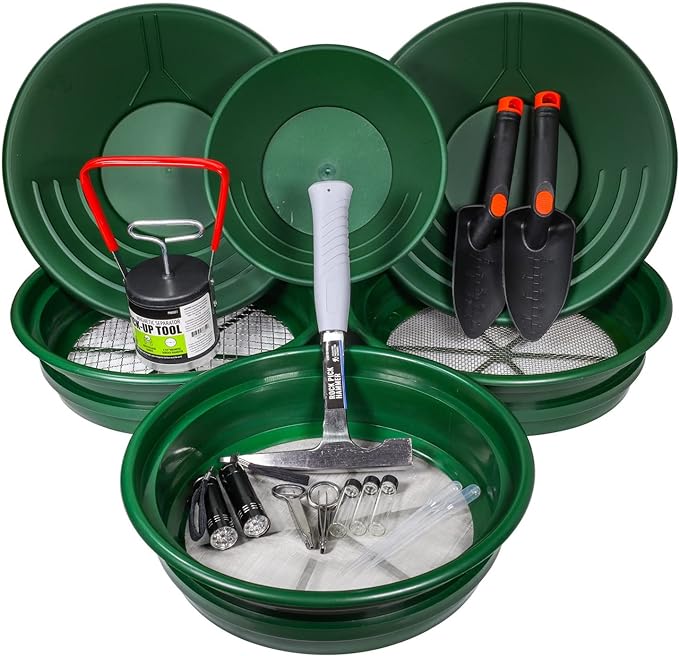 |
Deluxe Gold Panning Kit | Check it out on Amazon |
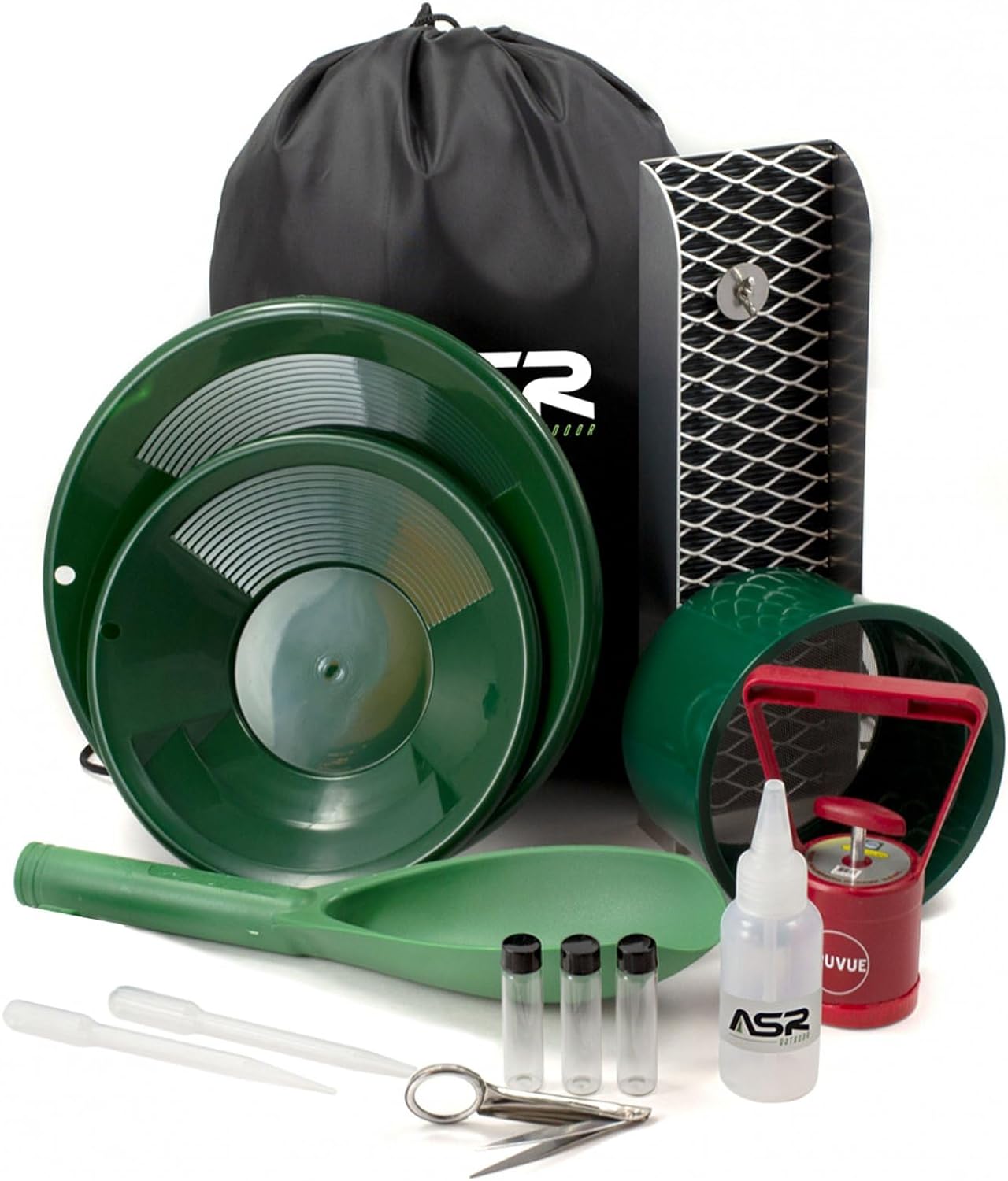 |
Advanced Gold Panning Set | Check it out on Amazon |
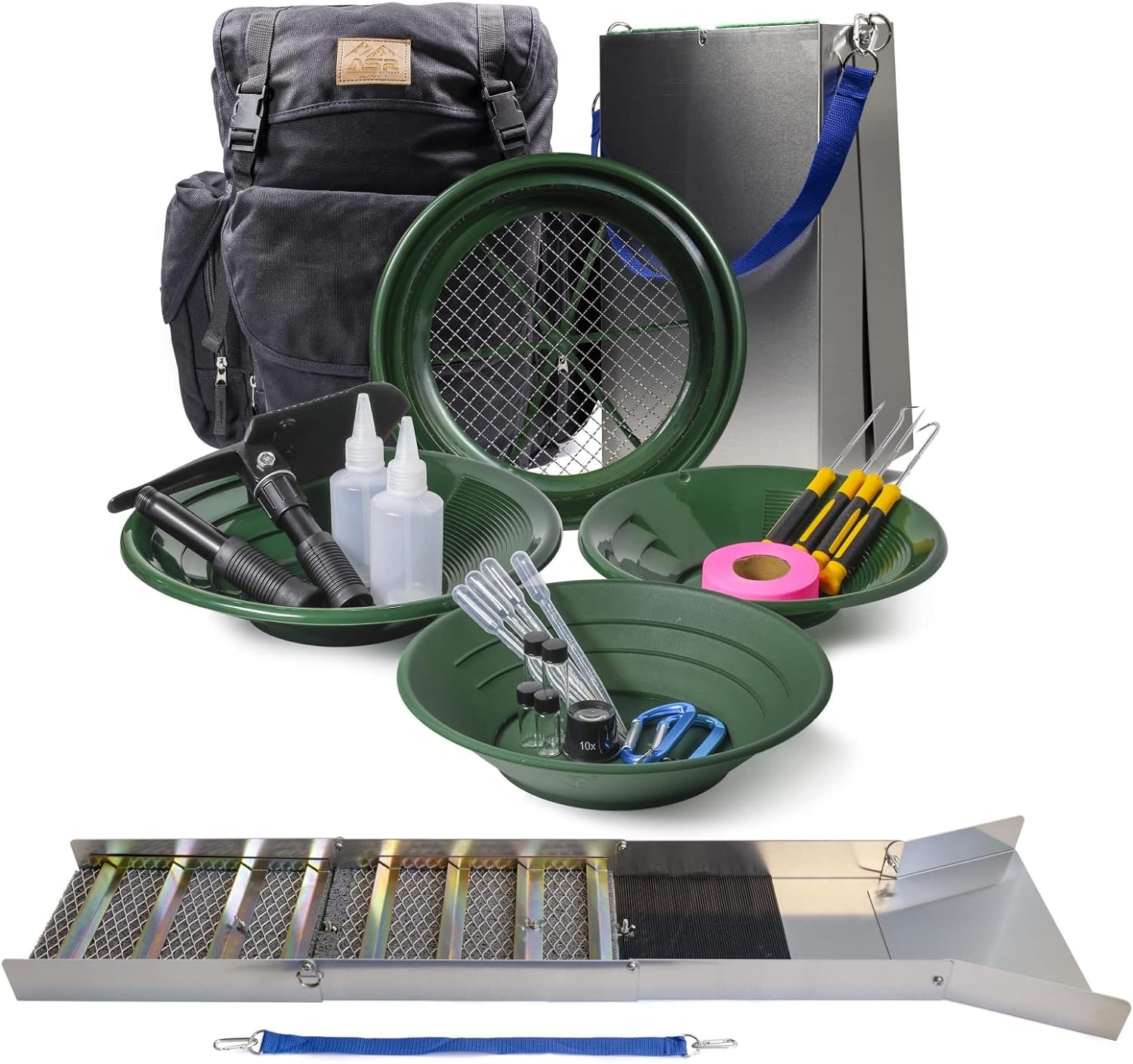 |
Professional Gold Panning Equipment | Check it out on Amazon |
Disclosure: As an Amazon Associate, I earn from qualifying purchases.

